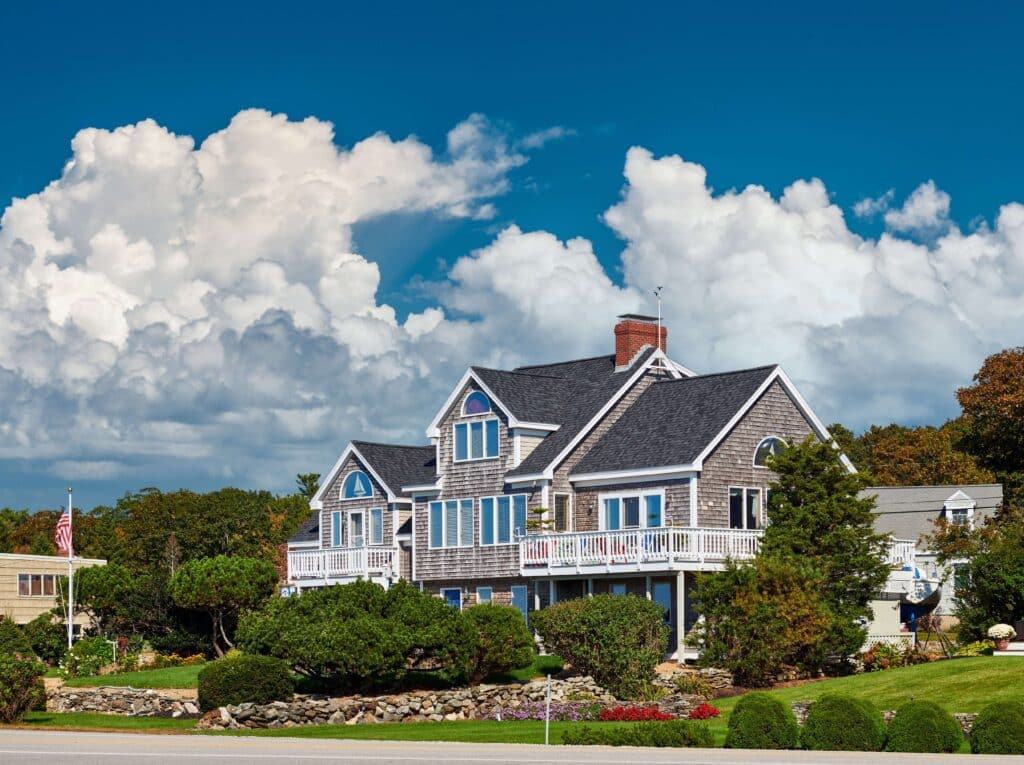These acronyms refer to indicators determining an area’s cost of living (COL). This factor is thoroughly researched by physicians searching for the right market for their specialties before moving to a new city. Yet, it’s also crucial in retirement planning.
From low to very high and all the indicators in between, we’ll share how the area you choose to live in impacts your retirement goals.
What Determines the Cost of Living?
Cost of living statistics are reports that research the lifestyle indicators of various groups of people living in a community. As a generalization, the higher the average income is within an area’s geographic boundaries, the more expensive you can expect the cost of living to be.
This factor isn’t just crucial for retirement planning; it can also impact the job opportunities and salaries provided in an industry like healthcare.
So, choosing where to live affects your future and plays a substantial role in your professional life. The sweet spot of a strong financial health plan could look like a high salary and a low cost of living, but there are other indicators to consider.
Cost of Living Impacts on the Region
In classic chicken vs. egg style, the COL in an area impacts both the availability of goods and services and how far your resources are allocated.
The more luxurious the options are, the more you need to make to afford them. If everyone in a community makes a lot of money, the cost of living is higher, and your dollar doesn’t stretch as far.
Higher living also makes people prone to lifestyle creep. You look around your neighborhood, make friends with your neighbors, and feel the temptation to buy things that aren’t necessary in order to “keep up with the Jones’.” Your income may increase, but the funds are spent instead of saved or invested.
What Does LCOL, MCOL, HCOL, and VHCOL Mean?
In retirement, lifestyle creep in higher cost of living regions tempts or forces people to spend their savings faster. Part of a successful financial plan includes using the Cost of Living Index (COLI). This number considers the broader changes in expenses necessary to maintain a particular standard of living.
With that number in mind, you establish strategies in your savings and investments to meet the goals of your future expenses, whether it’s an LCOL, MCOL, HCOL, or VHCOL. But what does that mean? Let’s look deeper at each category next.
Low Cost of Living (LCOL)
Lower cost of living area highly affordable compared to the nation’s average city or region. These communities likely have cheaper costs of housing, groceries, and healthcare, and may have lower tax rates.
LCOL regions are often more affordable to live in, but they also have downsides like limited access to resources and job opportunities. These areas work well for those seeking lower housing costs, such as rent and property taxes, and an overall reduced cost of living.
Those who retire in an LCOL area have lower living expenses and can:
- Stretch their resources further
- Pursue things they enjoy doing with extra money
- Save
Drawbacks include fewer job opportunities, lower wages, and fewer amenities and attractions, and sometimes not a lot of people.
But healthcare providers are often incentivized to live and work in LCOL regions, encouraged by perks like student loan repayment or forgiveness programs, sign-on bonuses, and tax advantages. These financial benefits can make substantial impacts on retirement planning goals.
Medium Cost of Living (MCOL)
The next level up from an LCOL region is a medium cost of living (MCOL) area. These are considered to have an affordable balance of comfortable living and opportunities without unnecessary expenses that detract from discretionary income savings and investments.
MCOL areas offer more product and service providers and job opportunities, along with higher earning potential. They are typically close to big cities without being in the heart of them, making it convenient to get to work and travel for amenities and healthcare without much of a hassle.
However, planning for future living in an MCOL area can be a challenge. It’s common for these neighborhoods to become HCOL communities when they’re overpopulated by those looking to live near a big city without paying more.
This effectively “prices out” the original inhabitants as taxes, goods, and service costs increase.
High Cost of Living (HCOL)
In HCOL areas, lifestyle expenses are higher than those of the average American.
Demand often dictates cost, so these high cost of living areas are frequently large cities close to hubs and popular attractions, such as Atlanta, NYC, and Los Angeles. There, the housing and job markets are in demand, increasing the cost of living to more than the national average.
Although the perks of living in HCOL cities are abundant, including substantial job opportunities and available amenities, living there requires more resources to go to housing costs. However, because of the many benefits, physicians often move to and retire in HCOL regions.
Very High Cost of Living (VHCOL)

Very high cost of living (VHCOL) areas are reserved for those with unusually high incomes, such as celebrities and high-level investors. These places are subsets of a city or region, such as Beverly Hills in LA or Manhattan in New York City.
Because of the exclusivity of a VHCOL, housing prices are significantly higher than the national average. But, if you want to enjoy the status of home ownership in one of these limited areas, the cost could be worth it.
Those in these communities may have better career opportunities, higher salaries, access to the “finest” healthcare and education with top school districts, and connections to a top-tier cultural and social network.
Professionals in certain industries may move to a VHCOL area to have better status within their fields, such as celebrities in Beverly Hills or tech professionals in Silicon Valley.
However, planning for retirement in a VHCOL requires an early start and/or strategic investing.
How Are the Cost of Living Categories Designated?
Cost of living ratings are fluid. They can change when outside influences affect the area’s desirability.
For example, a high-quality mall opens up in an LCOL area, increasing consumer traffic. Over time, this consistent influx increases the area’s economy and demand, and the LCOL properties become MCOL.
All of these numbers work together to generate the Consumer Price Index (CPI).
How the Consumer Price Index Works
The CPI is a number calculated by the Bureau of Labor Statistics (BLS) that measures the prices of goods and services paid by consumers in the US.
These numbers are a weighted average that changes monthly and are used to monitor inflation and deflation in the country. Both the CPI and COLI (cost of living index) are part of retirement planning.
The CPI results help plan for retirement, so that you understand how far your dollar is likely to stretch for factors such as:
- Housing Costs — The CPI measures price per square foot, which increases as you move toward high-status areas. (This factor is number one as it’s typically the highest expense.)
- Access to Goods and Services — This includes things like healthcare and education. Since healthcare is a primary focus for retirees, retirement plans often consider this factor.
- Utilities and Property Taxes — These monthly expenses must be projected and included in any retirement plan.
- Transportation Costs and Access — These include potential future needs such as public transportation and rising fuel prices.
Financial advisors use the CPI and other statistics to assist clients in determining how much money they’ll need to have in savings to live the quality of life they want in the area they choose to retire in.
What to Consider When Choosing a Retirement Location
Where will you retire when it’s time to put away your stethoscope and enjoy your years of hard work?
For some people, this choice is arbitrary, a result of childhood dreams or proximity to children and grandchildren. But when you approach this decision with a financial strategy, planning for your future costs is easier.
Still, how can you choose a retirement area if you’re unsure where you’ll be in 10, 20, or 30 years?
Designing Your Retirement Environment
First, think about what factors you know you’ll need for the quality of living you’d like to have, such as:
- Climate
- Location
- Healthcare access
- Cultural and social opportunities
- Amenities
Will you want to be deep in the heart of city life or in the suburbs? Do you prefer rural areas off the beaten path? How accessible do you need things like transportation and access to shopping and restaurants to be?
The Details Determine COL
Once you have answers to those questions, the next thing to ask is what you want your cost of living expenses to look like.
Discuss this with your financial advisor, who can help you research the cost of living in places that align with your future quality of living goals.
Consider all aspects of living in a particular state or city, such as:
- Property and sales tax
- State and income tax
- Homeowners association costs in retirement communities
No matter how healthy you are today, the quality of medical care in your future retirement city is important. Look for places with close proximity to prime healthcare facilities and quick emergency service responses.
Keep in mind that you don’t have to decide your exact address right now. However, working with a personal finance planner who knows your goals, including lifestyle and interests and your preferred quality of life, can help you navigate more accurate numbers in your quest for financial independence in your retirement.
Renting or buying in an LCOL area can save you money on everyday expenses, giving you more disposable income for primary costs like healthcare.
But if you know where you want to retire, buying real estate early in the right location can help you pay it off early. This wise choice can allow your savings to go further as you’ve conquered the number one cost of living: housing.
How to Plan For an HCOL or VHCOL Retirement

How do physicians and other higher-income households adjust to retirement after living in an HCOL or VHCOL neighborhood?
If they don’t want to shift their quality of life to a more affordable cost of living area, they must plan for their new financial status.
If that sounds like you, it’s vital that you work with a financial advisor who understands the unique challenges and goals of physicians, like OJM Group. Discuss your hopes for your lifestyle, hobbies, travel plans, healthcare considerations, and other needs so you can plan thoroughly for any costs that might be overlooked.
With a target in mind, you can begin to invest appropriately. These investments depend on your particular situation, risk tolerance, and estate planning goals.
Combining these factors together, your financial advisor can guide you as you decide how to incorporate the following investments into your retirement portfolio:
- Stocks
- Bonds
- Tax diversification strategies
- Real estate
- Life insurance retirement plans (LIRPs)
Learn more: The Physician’s Guide to Life Insurance Retirement Plans
Your advisor can also work with you as you determine how to budget your spending today to create a stronger financial future tomorrow. Once you’ve pinpointed how much you’ll need in investments and savings to retire at your preferred COL rate, you can evaluate your income and decide if you’re comfortable where you’re at, or whether you want to negotiate your salary or take on other side jobs to earn more investment cash.
This knowledge will help you move forward, confidently knowing that retiring won’t mean you need to reduce the higher standards of living you’ve grown accustomed to.
Conclusion
Regardless of whether you want to live in an expensive tropical paradise like Honolulu, the metro area of Denver, or rural Alaska, planning for retirement with a strategic approach matters.
Factoring in expenses like home prices, lifestyle creep, and other costs will help as you determine your financial goals.
Take the next step to prepare for your golden years today:
Disclosure:
OJM Group, LLC. (“OJM”) is an SEC registered investment adviser with its principal place of business in the State of Ohio. SEC registration does not constitute an endorsement of OJM by the SEC nor does it indicate that OJM has attained a particular level of skill or ability. OJM and its representatives are in compliance with the current notice filing and registration requirements imposed upon registered investment advisers by those states in which OJM maintains clients. OJM may only transact business in those states in which it is registered or qualifies for an exemption or exclusion from registration requirements. For information about OJM, please visit http://adviserinfo.sec.gov/ or contact us at (877) 656-4362.
This article contains general information that is not suitable for everyone. The information contained herein should not be construed as personalized legal or tax advice, or as a recommendation of any particular security or strategy. Investment involves risk and possible loss of principal capital. There is no guarantee that the views and opinions expressed in this article will be appropriate for your particular circumstances. Tax law changes frequently, accordingly information presented herein is subject to change without notice. You should seek professional tax and legal advice before implementing any strategy discussed herein.


